A story of deceit, fraud, forgery, and murder closed perhaps its final chapter in the book rooms at Heritage Auctions last month. This sordid tale goes back 35 years, though its beginnings started over four centuries earlier, in 1638. That is when Stephen Daye, a locksmith by trade, boarded a ship bound for the New World. He had agreed to work for printer Joseph Glover in return for paying his fare. Daye didn't know much about printing, but Glover was there to teach him the ropes.
It didn't turn out that way. Glover died on the voyage. Daye's indebtedness now belonged to Glover's widow, Elizabeth, who did not know as much about printing. Nonetheless, Daye, along with his son, took on their responsibility. Daye is best known today for producing the first book printed in what is now the United States, the book commonly known as the Bay Psalm Book. It is estimated he printed 1,700 copies in 1640, but it was not a quality production and the books were well-used. Only 11 copies are known to survive. The last one to sell at auction sold at Sotheby's in 2014 for over $14 million.
While this was Daye's first book, it was not the first item he printed. It is known that in 1639, he printed a single sheet of the Oath of a Freeman. This was a loyalty oath British subjects were to make to the King. This (or possibly some sort of atlas he may have printed) is the first printing of any sort in the U.S. portion of America. Not a single copy is known to survive, though for centuries people have searched. That was until 1984. That is when Mark Hofmann walked into the Argosy Book Shop in New York and walked out with a copy, which, along with five other items, cost him all of $25. At least, that is what he said. Over 35 years later, Hoffman's Oath has finally moved on.
Bookseller Justin Schiller recalled he first met Mark Hofmann at the New York book fair in 1984. Hofmann picked him out to be his dealer. The reason was that Schiller was a dealer in children's books and that was Hofmann's interest. However, this would quickly turn to something not fit for children.
Schiller explains that Hofmann “had a passion for early books.” He also claimed he was the beneficiary of a trust fund. Every few months he would get a payment which enabled him to purchase important books. Hofmann, who was from Salt Lake City, also said that he had made some significant discoveries. These included items of interest to the Mormon church. The church was a buyer, but needed funds for purchases, so, he said, they made him an “archivist.” He could could go through their collections, select non-Mormon items he thought worthwhile, and sell them to raise funds to buy the Mormon items he was finding. He explained to Schiller this was done quietly as otherwise, someone will always object to selling anything, which in turn would have made it impossible for the church to buy the items it wanted. It was a good story.
Unbeknownst to Schiller or anyone else at that time, Hofmann was a liar and master forger. The documents he was “finding” he was, in fact, making. As Tyler Measom, Director of the movie Murder Among the Mormons, explained, Hofmann rose from being a mediocre forger to an absolute master. Perhaps this is not surprising, as he said Hofmann forged a coin at age 14 so well that he fooled the U. S. Treasury Department into thinking it was real.
Hofmann was making some amazing “finds,” including the infamous Salamander Letter. More about that later. Schiller said he had known Hofmann for about four months when his piece de resistance appeared. That was the Oath of a Freeman. How much would the first document printed in the U.S., of which this was the first copy ever discovered, be worth? Hofmann estimated $50,000. Schiller told him it was worth $1.5 million.
Naturally, when something this astonishing appears a couple of questions immediately arise. Where did it come from? Is it real? If something seems too good to be true... you know the rest. Hofmann had an answer. It came from Argosy Books and Hofmann produced a bill of sale to prove it. It showed that he had purchased the Oath of a Freeman and several other items for $25. Evidently, Argosy did not know what it had.
That was not nearly enough proof. Schiller then consulted numerous experts to evaluate the Oath. All but one thought it was real, or at least, that there was nothing about it that established it as a fake. The only scientist who disagreed was one who had authenticated the Shroud of Turin, which made Schiller question his judgment. In the process, Schiller, who had a financial deal with Hofmann if the item was sold, spent an enormous sum on authentication and selling, well into six figures. He took it to the Library of Congress, with the price set at $1.5 million. They examined it carefully, and while not confirming its authenticity, stated that there was nothing inconsistent with it being real. Still, they balked. Reportedly, they were concerned about the provenance, title, and price. Schiller took it to the American Antiquarian Society. They wanted it, but not for $1.5 million. They offered $250,000. He turned it down. Not enough.
Meanwhile, one of Hofmann's earlier efforts, very good but not quite good enough, was causing some suspicion. This was the Salamander Letter. It was a letter supposedly written by one the three witnesses named in the Book of Mormon. If true, it would have rocked the tenets of the Latter-day Saints church. It implied that founder Joseph Smith had engaged in some magic sort of stuff in the creation of the Book of Mormon. It also claimed that it was not an angel that brought the golden plates to Smith but a white salamander. Ouch. He attempted to sell it to the church, probably thinking they would want to bury it. They did not buy. He did find a believer in collector Steven Christensen. He bought it. Unfortunately for Hofmann, Christensen became suspicious in time and later convinced it was a forgery. Hofmann felt he had to deal with his client's suspicions. His answer was to kill him.
On October 15, 1985, Hofmann planted a bomb at Christensen's office. When the latter attempted to pick it up, it exploded, killing him. An hour and a half later, a second bomb exploded at the home of Christensen's business partner, Gary Sheets. The idea was to make it look like Christensen's murder had to do with business dealings, not with Hofmann and the Salamander Letter. It, too, exploded, killing not Gary Sheets but his wife, Kathleen. There was also a third bomb, but it accidentally went off in Hofmann's car, injuring him.
With that, police became very suspicious of Hofmann. He was exceptional at faking documents, but not at faking murders. They searched his house. They found the plates for some of his forgeries, along with other tools of the trade, guns, and the name of the firm that created the plate that was used to print the Oath. Now, the experts reassessed their judgment of Hofmann's various works. They found numerous similarities in some of his works not previously noticed as they were not examined together. It all came tumbling down. Utah, as Schiller observed, is “Gary Gilmore” country. Gilmore was the killer who was executed by firing squad. Hofmann decided it was better to plea bargain than go to trial. In return for his life, he agreed to confess. He was sentenced to five years to life. It will be the latter. In seeking early parole in 1988, he wrote a letter to the parole board that showed no remorse. They told him he would never get out. Schiller adds that he tried to hire someone to assassinate the parole board members. I cannot confirm this, but if so, it is understandable why they would tell him you will never get out. Thirty-three years later, Hofmann is still alive, residing in the Utah State Prison at Gunnison. He is 66 years old.
How was he able to pull off these forgeries? Both Schiller and Measom were astounded by his skills. He took blank pages from contemporary books so the paper would be authentic. The paper used for the Oath was one of those Daye had used in printing the Bay Psalm Book. He dug up an old book that explained exactly how ink was made in those days and duplicated the process masterfully. He even used chemicals to mimic the aging process. Schiller recounted that to imitate the way ink gradually bleeds through a piece of paper over time so as to be visible on the reverse, he placed his Oath on a screen and ran a vacuum underneath it. He was filled with tricks like that.
As for the receipt from Argosy Books, he sneaked a much inferior, obvious imitation of the Oath into their shop with him so they would write it up on a bill of sale as being the Oath of a Freeman without any thoughts it might be the real thing.
For the past 35 years, Schiller has been sitting on this document. The mind may know, but the heart resists. He kept open the slight possibility that, against all odds, it actually was real. Schiller said, “It's a nightmare,” and “I've lived with this for 35 years,” “but,” he continued, “inside I had hope there was a slight possibility the oath was real.” Schiller is now well into his 70s and it was time to accept the inevitable. “At this point we must accept the Oath is a forgery.” He put it up for auction. And yet, in hoping the buyer will make it available to researchers, he added that he still hopes there is a slight chance that it will eventually be determined the Oath is real. Giving up a dream that has lasted half a lifetime is hard.
The forged Oath of Freeman sold to an anonymous bidder on June 9, 2021, at Heritage Auctions for $52,500, handily beating the estimate of $16,000-$24,000.



![<b>Heritage, Dec. 15:</b> John Donne. <i>Poems, By J. D. With Elegies on the Author's Death.</i> London: M[iles]. F[lesher]. for John Marriot, 1633. <b>Heritage, Dec. 15:</b> John Donne. <i>Poems, By J. D. With Elegies on the Author's Death.</i> London: M[iles]. F[lesher]. for John Marriot, 1633.](https://ae-files.s3.amazonaws.com/AdvertisementPhotos/8caddaea-4c1f-47a7-9455-62f53af36e3f.jpg)
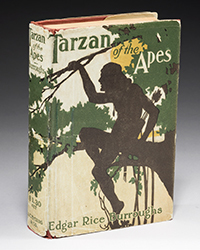
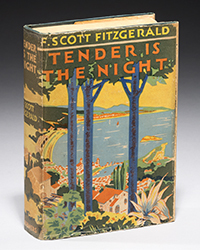
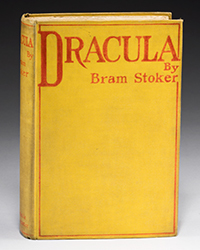
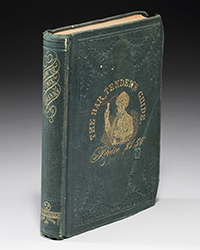



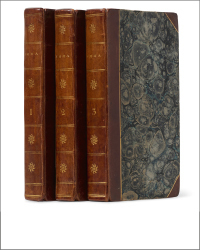
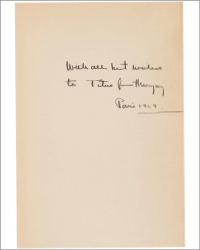




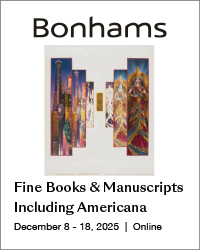

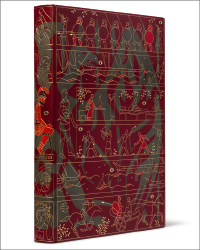
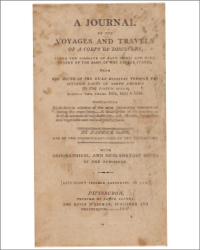
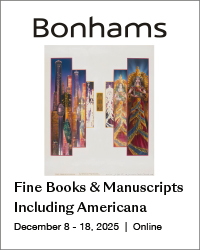
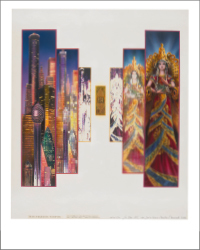
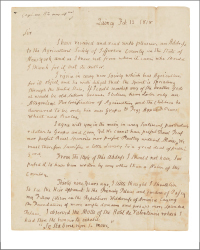

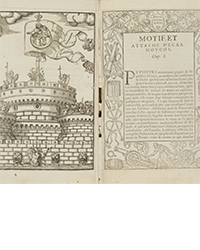
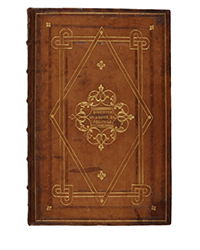
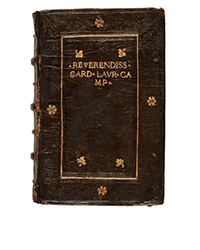
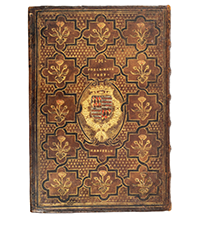
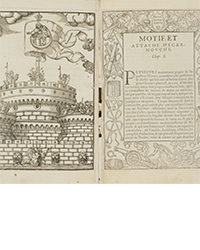
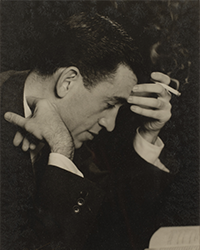
![<b>Sotheby’s, Dec. 16:</b> [Austen, Jane]. A handsome first edition of <i>Sense and Sensibility,</i> the author's first novel. $60,000 to $80,000. <b>Sotheby’s, Dec. 16:</b> [Austen, Jane]. A handsome first edition of <i>Sense and Sensibility,</i> the author's first novel. $60,000 to $80,000.](https://ae-files.s3.amazonaws.com/AdvertisementPhotos/9a74d9ff-42dd-46a1-8bb2-b636c4cec796.png)
